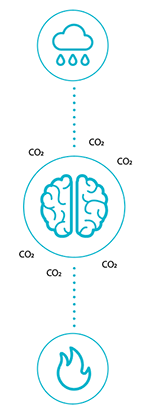Climate change may impair cognition


By the year 2100, we may not be thinking too clearly.
Rising atmospheric carbon dioxide concentrations (CO2) might mean that people will be breathing indoor air with CO2 levels up to 1,400 parts per million by the end of this century, according to a CU Boulder-led study. That’s more than three times today’s outdoor CO2 levels and well beyond what humans have ever experienced. Air with such high CO2 concentrations may reduce our basic decision-making ability by 25 percent.
“It’s amazing how high CO2 gets in enclosed spaces,” said Kris Karnauskas, CIRES Fellow, associate professor at CU Boulder and lead on the 2020 GeoHealth study. “It affects everybody—from kids packed into classrooms to scientists to regular folks in their homes. It’s an indirect, overlooked impact of climate change.”
Principal Investigator
Kris Karnauskas
Collaboration + support
Cooperative Institutes for Research in Environmental Sciences (CIRES); CU Boulder Departments of Atmospheric & Oceanic Sciences, Environmental & Occupational Health, Mechanical Engineering; Colorado School of Public Health; Department of Psychology, University of Pennsylvania

